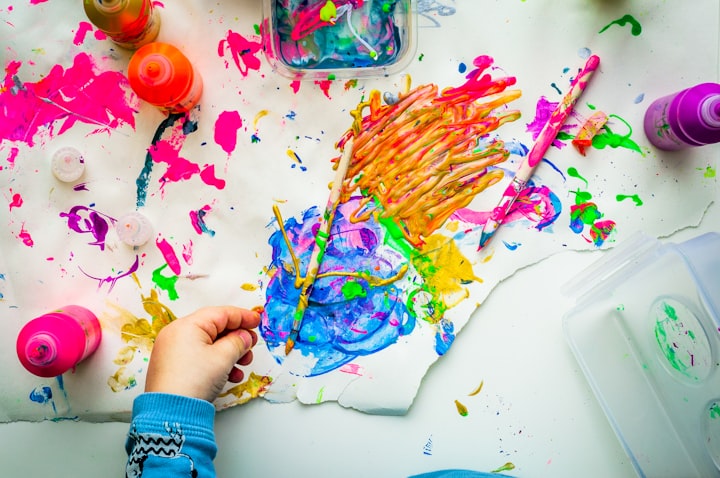How to improve your creativity and problem solving
Creativity is something new, something that does not exist before, and it can affect the whole world, not just one person, and positively.

Creativity is something new, something that does not exist before, and it can affect the whole world, not just one person, and positively. If we look at the definition of creativity, we will find that it can use imagination to create new ideas and objects.
If we adopt a standard definition of creativity, we can consider it to be the most creative form, given its use of imagination as a tool for creating new things and ideas.
Creativity, of course, cannot be reduced to a single mental process, and we cannot capture it in a snapshot; it is also limited by history, so counting creative inspiration in a period or place can be considered ridiculous, stupid, or crazy.
We understand that the brain works in many different ways, from solving problems to developing new ideas. Some people can produce creative insights and mindsets on demand, but who knows which process would lead to creativity?
Some ideas have zero originality (and therefore no creativity), but someone who reinvents the wheel produces useful ideas. Some ideas have zero imagination and consequently no creativity, but something about being reinvented means that they have created a helpful concept. And that means that some of these ideas are not original, hence no creativity.
Creativity is not just any magic gift given to a lucky few but a skill that we can refine and develop. There are several creative skills you can practice to get more creative in your workplace.
Creativity can be used to improve a product, process or service, or as an excuse to create it in the first place.
Creativity can be defined as the ability to connect two or more ideas that seem to be completely independent of each other. It is really about combining two different ideas that you have not thought of before.
It is a difference, for example, whether you distinguish between two different kinds of things, such as various kinds of music or other styles of art.
Creativity inspires practical problem solving, leads to innovative thinking, and inspires lateral thinking. These exercises encourage dissent, helping you develop the skills needed to become a powerhouse of creativity.
In these top ten, we reveal some of the most popular ways to use Spotlight Strategies to promote creativity and innovation in the classroom.
Problems can occur anywhere, but problems - activities that focus on strengths, weaknesses, opportunities, and threats are more likely to be used as part of the problem-solving process in the team or organization and are much more effective at solving problems than other methods of solving them.
Activities that help to solve problems are defined as problems that solve problems, and that includes defining the problem, clarifying its cause, setting priorities, selecting alternatives and better solutions, examining parts, implementing solutions directly, and so on.
Problem - Solution activities are designed to help gather and advance knowledge by gathering knowledge, eliminating the possibility of disagreement in identifying, clarifying, and analyzing organizational work problems.
Problem - Solving processes are comprehensive and thought-out, and teams consist of various types of problem - activities, some of which are designed to facilitate conversation and encourage creative thinking.
If you have a list of problems to solve and have organized them accordingly, you are well-positioned for the next issue - the solution step.
Dean Keith Simonton, who studied creativity, found that the quality of creative ideas is a positive function of quantity. The more views a creator produces, the greater the likelihood that it will ultimately become a masterpiece.
A faster brain plays a larger role in creating a creative idea, while a more conscious and slower brain plays a larger role in researching and playing with the idea and determining its use and application.
The exchange of creativity and ideas with others has often led to new ideas, new skills, and new ways of thinking. No doubt this has traditionally turned into a more incredible spark of creativity - and encouragement.
Use these innovative hints to boost your problem-solving abilities,
1. create a more tactical mindset, and also train your Mind to perform more. Do not just develop a concept and run with it, have the time to return to it to allow you to grow it
2. You will learn how to solve problems through creative thinking and incorporate these skills into your career.
You will improve your problem-solving skills and be better able to serve your customers, better understand challenges, develop your skills throughout your career, and learn more about the importance of critical thinking.
3. If that means spending time working together and finding better, novel solutions that could have been had one tried to force or rush a solution, then try creative problem-solving instead.
4. The purpose of the above problem - the solution activities - is to make you think of issues differently and have fun solving them, which will stimulate your creativity in finding and implementing solutions.
By focusing on these activities again, you will improve your creative problem-solving skills and provide you with fresh perspectives and ideas that will surprise you in the best way possible.
5. Keep flexible by playing with thinking puzzles, and individually you can practice creative problem-solving. Through conscious exercises that improve creativity and mental agility, you can operate at a much higher level of performance even when you have the most challenging problems.
Good examples of creative thinking skills can be problem-solving, creativity, problem-solving skills, and problem management.
Some of the best examples of creative thinking and abilities could be creative writing, social networking, business planning, decision making, communication, team building, leadership, marketing, customer service, management, or problem-solving.
As with creativity, problems can lead to opportunities, and failure to solve problems can lead to progress in achieving these opportunities. Bear in Mind that creative thinking and problem-solving are a way to overcome the Constraints of an Issue and recognize past Challenges.
Try out brainstorming techniques, see what difference they can make the next time you try a solution, and improve your creative thinking.
Among the most effective ways to unleash your imagination and discover answers to issues is brainstorming. Employing innovative problem-solving techniques challenges one to permit your head to play out various scenarios without criticism or judgment.
Adding limitations to your questions and problems can increase your focus and problem-solving ability and even stimulate creativity.
Creativity and problem solving are effortless processes, but the key is to learn how to get out of your way. Getting used to a centered approach to problems is perhaps one of the most critical aspects of problem-solving skills. Even though it's a strength as a skill, problem-solving is something that you have to work on to develop and practice it to maintain it.
If you do not yet wind up as a capable, creative thinker and problem solver, you will discover some vital skills and methods to become one. Your decision, problem-solving abilities can allow you to get through work and life successfully.





Comments
There are no comments for this story
Be the first to respond and start the conversation.